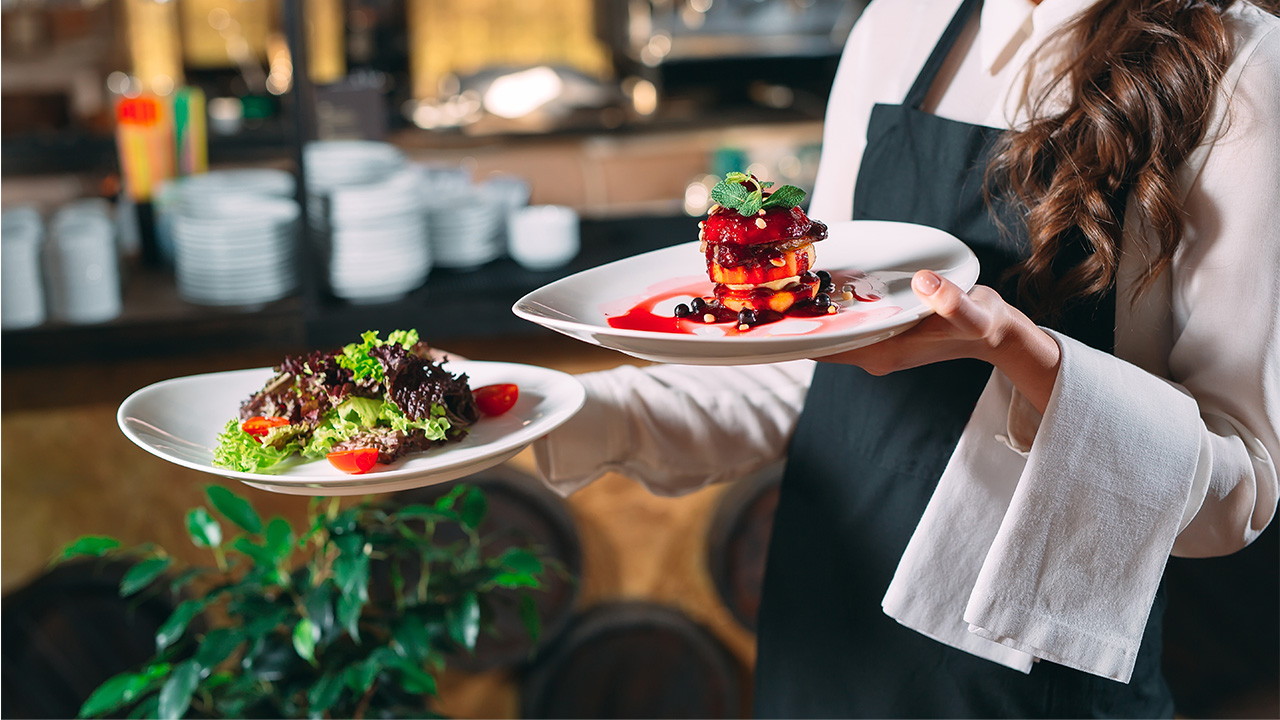All right. Today I want to talk about real social media marketing strategies for restaurants that actually drive business. So if you’re running a restaurant, a cafe, or any other food focused spot, you’ve probably felt the pressure to post more. Being everywhere and showing off that perfectly drizzled sauce can feel like another full-time job.
And you’ve probably already got an overflowing plate. You spend time snapping photos, crafting captions, and then nothing, or maybe just a few likes from your mom or your most loyal regulars. You have to ask yourself, is it actually doing anything for your business? Because just chucking photos of your specials on Instagram or Facebook and hoping for the best isn’t a strategy.
It’s digital window dressing at best. And while looking good online has its place, if it’s not translating into bums on seats, online orders, or building a loyal following that keeps coming back, then frankly, what’s the point? The good news is social media marketing for restaurants, when done strategically, can be incredibly effective.
It’s not just about posting food porn, though great visuals are definitely part of the recipe. It’s about connecting with potential diners, turning interest into bookings, building a community around your brand, and even protecting your hard-earned reputation. Forget the fluff and the gurus promising overnight viral success.
Let’s dig into what actually works in the real world of clanging pans, busy services, and trying to make payroll. This is your no-nonsense guide to making social media work for your restaurant.
Establishing Your Brand Identity and Strategy
First up, you’ve gotta get your story straight. Before you even think about what to post, let’s nail down who you are online.
Your social media presence is like your restaurant’s digital handshake. Is it firm and confident, warm and welcoming, or a bit quirky and fun? Whatever your brand’s personality, it needs to be crystal clear and consistent across every platform, every post, and every reply. Think about it. If your Instagram feed seems like a casual, fun burger joint, but a customer walks in to find white tablecloths and hush tones, you’ve created a disconnect. For more on the importance of presenting a consistent brand, check out our article on Find Your Brand Voice because it’s More Than Just a Logo.
That mismatch breeds confusion, maybe even disappointment, regardless of how good the food is. It erodes trust, and people like knowing what to expect. Consistency ensures your online promises match the real-life experiences that you deliver. It’s not just about logos and colours; it’s about the feeling, the voice, the vibe.
Is it the same online as it is when somebody snaps through your door? ‘Cause it absolutely needs to be. Now, I know strategy sounds like something reserved for boardrooms and consultants in expensive suits, but honestly, for social media, it just means knowing why you’re posting. Are you trying to fill tables on a quiet Tuesday night?
Launching a new brunch menu? Trying to get more online takeaway orders? Setting clear goals is step one, and let’s make them smart goals. Specific, measurable, attainable, relevant, and time bound. We’ve covered that one plenty of times before. Instead of a vague goal, like get more followers, aim for something more like increase online reservations originating from social media by 15% during the third quarter.
See the difference? Now you can actually track if your efforts are moving the needle on something that matters to your bottom line. There are fancy frameworks out there—S-M-M-E-F, the three Cs—you name it. You don’t need to become an expert in all of them. The real magic happens when you simply choose a structured approach that works for you. The process itself forces you to think strategically, align your team, and ensure your posts have a purpose beyond just filling the feed.
A simple plan consistently executed will always beat random acts of posting.
Creating Content That Connects
Now, creating content that connects—now for the fun part—what do you actually share? For restaurants, content is king, and visuals wear the crown. Let’s be blunt, people eat with their eyes first, especially online. The data doesn’t lie.
A whopping 84% of diners want to see photos of your food and your drinks on your social media. More than half say food pics significantly sway their decision to visit. And it’s not just the food. Nearly half want to see your decor and the ambiance, too. So investing in good high-quality photography and videography isn’t a luxury. It’s a non-negotiable. Grainy, per lip photos of your signature dish just won’t cut it. Think natural light, clean backgrounds, and shots that make people feel the texture and imagine the taste. This isn’t just about making your feed look pretty. These visuals are powerful sales tools working down the funnel. Want to transform your website with killer photos? Check out Lights, Camera, Bookings! How Killer Photos Transform Your Tourism Website (and Your Bottom Line).
Persuading potential customers right when they’re deciding where to eat. Good photos aren’t just marketing fluff; they directly contribute to getting people through your door. Now static images are great, but don’t underestimate the power of motion. Video brings your restaurants to life.
Think short clips showcasing the buzz of a busy service, a bartender expertly crafting a cocktail, or even a quick cooking tutorial from the chef. Here’s a pro tip: people love seeing behind the curtain. Share glimpses from your team prepping ingredients, the morning bakery routine, or the story behind sourcing from a local supplier.
This kind of content humanizes your brand, builds incredible trust, and lets people connect with the passion behind the plate. While polished, professional shots are essential, weaving in these authentic, behind-the-scenes moments can create a much deeper connection. Consider going live on Instagram or Facebook for Q and As or special event coverage to interact in real life.
But if you’re gonna do that, it’s important to make sure you’ve got a decent sized audience first. So let your customers do the talking. You want more powerful, trustworthy marketing content that doesn’t cost you a fortune? Look no further than your own customers. User-generated content, or what we call UGC—photos, videos, reviews, and posts shared by your guests—is marketing gold.
Because it’s authentic. It’s real. People sharing real experiences, which acts as powerful social proof, often far more believable than anything you could create yourself. Encourage guests to share their snaps. Create a unique hashtag, run a photo contest, or simply ask them to tag you. Feature the best UGC on your own feed.
Always ask permission first, and displaying positive user-generated content builds loyalty and amplifies your reach organically. Yes, it means giving up a little bit of control over the exact message. You need systems to monitor messages and engage appropriately, but embracing user-generated content shows you value your customer’s voices and are confident in the experience you provide.
Telling Your Story and Sharing Your Values
Now, people connect with stories, not just menus. Use social media to share the narrative behind your restaurant. What’s the origin story? Who’s the passionate chef behind the creations? Your connections to the local community? What drives you? Sharing these stories creates emotional hooks that go well beyond just selling food.
This is especially potent when it comes to sharing your values, like a commitment to sustainability or supporting local producers. Highlighting how you source ingredients, reduce waste, or support community initiatives resonates deeply, particularly with a younger demographic like Gen Z, who prioritize businesses aligned with their values.
And this is big, but you can’t fake it. If you talk the talk about sustainability, you better be walking the walk, too. Claims need proof. Show photos of your local farm partners. Detail your waste reduction efforts. Highlight relevant certifications. Authenticity here isn’t just a nice to have.
It’s essential for credibility.
Platform Selection, Timing, and Content Calendars
So you’ve got great content ideas. Now, where do you post it and how often? The million-dollar question: which social media platform is best for my restaurant? And the answer isn’t a single platform. It’s where are your customers you want to reach spending their time?
Facebook is still huge for discovery, especially among older demographics. It’s great for sharing updates, events, menus, running ads, and collecting reviews. Instagram is a visual powerhouse essential for showcasing stunning food, drinks, and ambiance reels are key for video. TikTok dominates with younger audiences and requires short-form, engaging, often trend-driven video content.
Think fun behind the scenes, quick tips, that kind of thing. Your Google Business Profile, Yelp, and TripAdvisor, whilst not traditional social media, are critical for discovery, reviews, and accurate info. I think our opening hours and location claim and manage these listings diligently. The key is not to just blast the same message everywhere.
Tailor your content and your approach to fit the platform and its audience. What works on Instagram might fall flat on Facebook or be totally wrong for TikTok. The timing is important. You get a post when people are listening. You could create the most amazing posts, but if you publish it when your audience is asleep or stuck in meetings, it won’t get seen.
Posting during peak engagement times significantly boosts visibility, but forget generic advice like post at lunchtime. Use the analytics tools within each platform. They will tell you exactly when your specific followers are most active, engaging with content. This might change depending on the day or even the season.
Monitor these patterns and adjust your posting schedule accordingly. Think about when people are most likely planning their meals or looking for dining options. Now, consistency without insanity—if you’re feeling overwhelmed by the thought of posting constantly, this is where a content calendar becomes your friend.
Planning content in advance, even just a week or two, ensures consistency, which audiences and the algorithms tend to like. It helps you mix up content types, like promotional, behind the scenes, user-generated tips, that kind of thing, and avoids that last-minute panic of what should I post today?
Think about scheduling tools to make life easier, but treat your calendar as a flexible guide, not a rigid rule book. If analytics show your Meet the Team Tuesday posts are tanking, but videos of cocktail making are flying, adjust the plan. Use insights from your analytics and social listening to keep the calendar relevant and effective.
It’s a living document. It’s not a stone tablet.
Engagement, Customer Service, and Reputation Management
Social media, it’s important to remember, it’s not a megaphone; it’s a conversation. Building a loyal following requires active participation, and engagement is a two-way street. Don’t just post and ghost. Respond to comments, answer questions, acknowledge mentions, and do it promptly and authentically.
Use people’s names, reference their specific points. Avoid generic, robotic replies. Remember, 43% of diners think responsiveness is very important. This interaction builds community, fosters loyalty, and shows you actually care operationally. This means empowering your team or the agency that’s doing it on your behalf, managing your socials to respond genuinely without getting bogged down in endless approvals.
Now, online reviews can be make or break. Nearly 90% of consumers trust them as much as personal recommendations from people they know. So managing your online reputation isn’t optional. Here’s the drill: monitor—keep tabs on Google, Yelp, TripAdvisor, Facebook, et cetera—respond—reply to all reviews, positive and negative—’cause 78% of people feel appreciated when businesses respond. Acknowledge the positive, thank happy customers, and handle the negative professionally. Respond quickly, acknowledge their experience, offer a sincere apology if it’s warranted. Stay calm and empathetic. Never get defensive.
Explain how you’ll address the issue, and importantly, offer to take it offline.
You don’t want these things dragging out in the public view, but remember that your response to a negative review isn’t just for that one unhappy customer. It’s a public demonstration of your customer service commitment to everyone else reading it. A well-handled complaint can sometimes build more trust than a stream of perfect scores.
And don’t forget to gently encourage happy customers to leave reviews. Now, beyond service, using social media for customer care and building loyalty, people now expect to use social media for customer service inquiries. They see it as another opportunity for you to shine. However, this needs proper integration.
Your social media manager needs to be able to communicate effectively with your front-of-house or kitchen team to actually resolve issues raised online. Dropping the ball here is worse than not offering it at all. Also, keep an eye out for your biggest fans online. Those who consistently engage positively, nurturing these brand lovers can turn them into powerful advocates who defend your brand organically.
Influencer Marketing and Social Listening
If you’ve got the basics down, here’s a couple of ways to sharpen your edge. Influencer marketing can drive significant business. Forty percent of diners have visited a restaurant based on an influencer’s review, but tread carefully, and strategy is key. You are gonna set clear goals if you’re gonna engage an influencer.
What do you want the campaign to achieve? You’re gonna make sure you make your choices wisely. Focus on alignment and authenticity. Does the influencer genuinely fit your brand? Do they have real engagement, not just huge follower numbers? It’s worth considering micro-influencers. These are smaller niche influences, often having higher engagement, more trust, and a better ROI, especially for local targeting. Manage it professionally.
Use contracts outlining deliverables, compensation, and disclosure. You know, hashtag ad or hashtag sponsored content is kind of a non-negotiable. And measure the real impact. Track metrics that matter—referrals, bookings—using codes, not just the likes. And just remember, you’ve gotta be ethical about it.
Don’t pressure influencers for fake positivity. It damages their credibility and yours. Real partnerships built on trust are far more valuable. Now, effective online reputation management goes beyond just reviews. Use social listening tools to monitor mentions of your brand, competitors, and relevant topics across the web. The insights gathered aren’t just for PR. They’re business intelligence that can inform menu changes, service improvements, and operational tweaks.
Staying Agile and Adapting to Change
And finally, accept that the social media world is constantly shifting. Algorithms change, new features pop up. You need to stay agile. Dedicate time to learning experiments with new formats. And don’t be afraid to try new things. See what resonates with your audience. Want to learn more about upcoming changes? Here are the 2025 Social Media Trends Tourism & Hospitality Edition. A willingness to adapt and learn is crucial for long-term success.
Take Action and Seek Expertise
So there you have it. Social media marketing for restaurants is far more than just pretty pictures. It’s about strategic consistency, compelling content that tells your story, smart platform choices, genuine engagement, and diligent reputation management. It takes thought, effort, and maybe a size of your budget as well.
But when done right, the return is tangible—more bookings, stronger customer loyalty, a buzzing atmosphere, and a brand that people connect with and talk about. So stop treating social media like an annoying chore that you have to tick off. Start treating it like the powerful business-building tool it can be.
Pick one thing from this guide, just one, and commit to implementing it this week. Sharpen your photos, plan a content calendar, respond thoughtfully to that negative review, or start encouraging user-generated content. Take that first step. Your future self and your bottom line will thank you. And if you feel like you need a hand navigating all this, sometimes bringing in specialists who live and breathe this stuff can make all the difference.
Just saying.










